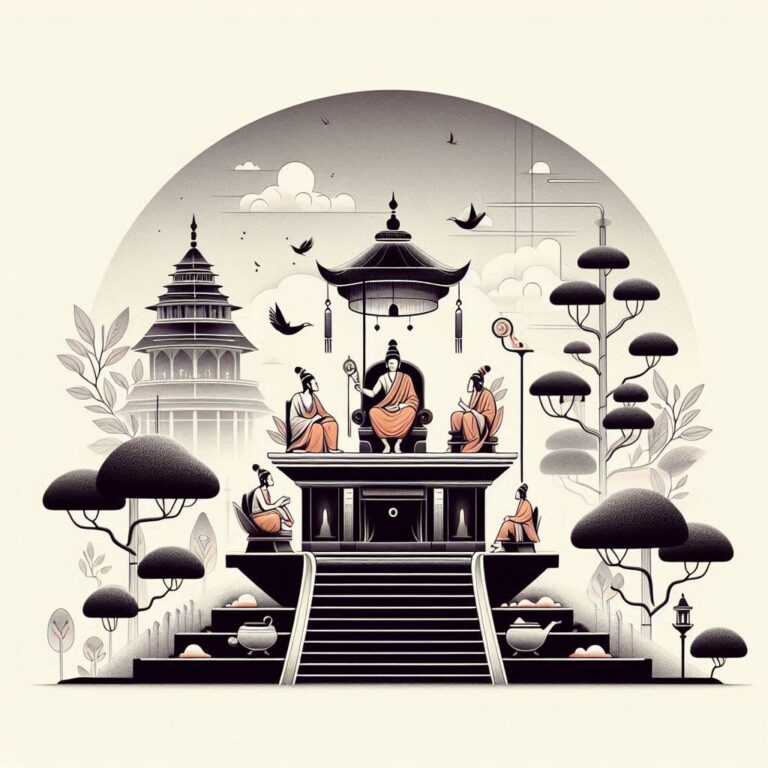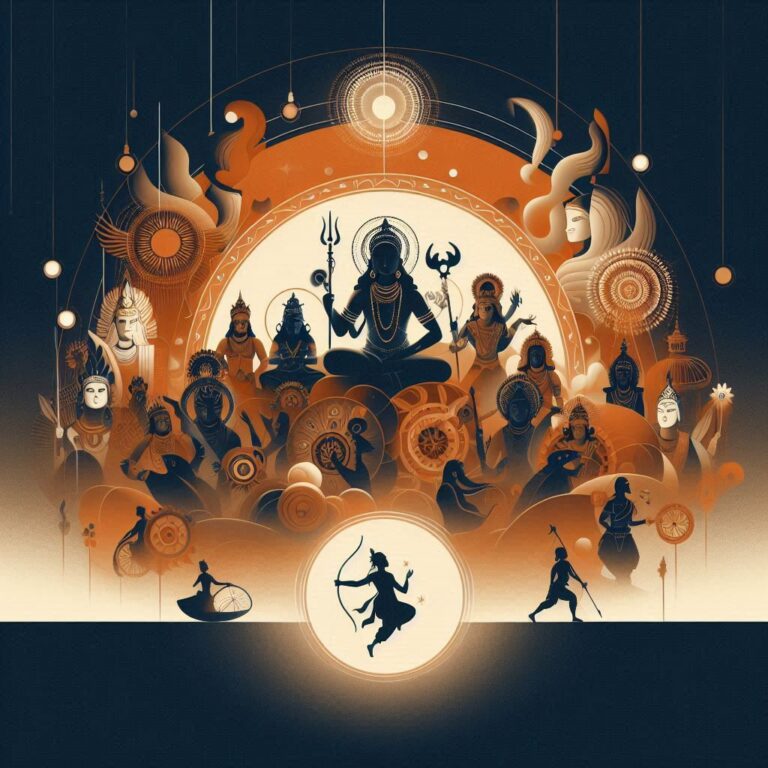Surpanakha’s Transformation: From Maiden to Demonic Figure in Ramayana
Surpanakha’s Transformation: From Maiden to Demon
When we think about iconic characters from ancient Indian epics, Surpanakha’s name often springs up. This enigmatic figure from the Ramayana is known not only for her audacious spirit but also for her heartbreaking transformation into a demon. But how did she go from a scorned maiden to becoming the terrifying figure we sometimes think of? Let’s dive deep into her story while exploring the themes of desire, rejection, and the stark reality of transformation.
Who is Surpanakha?
Before we get into her transformation, let’s take a moment to understand Surpanakha herself. Surpanakha, the sister of Ravana, was originally portrayed as a beautiful and powerful woman. She lived in the forest, doing what many do: dreaming of love, companionship, and the kind of acceptance that makes you feel whole.
Imagine yourself in her place—surrounded by the beauty of nature, yet feeling an emptiness inside because you want to be loved. That craving for connection is something we can all relate to. But for Surpanakha, that desire took a dark turn, leading her down a path that would change everything.
The Encounter with Rama
One fateful day, Surpanakha encounters Rama and Lakshmana while they are in exile. It’s like the plot of a romance novel, but with a twist. Here you have Surpanakha, a maiden with aspirations of love, meeting Rama, a handsome prince. She immediately feels drawn to him, and that’s where her troubles begin.
हे राम, तुम्हारी मोहकता है अद्भुत।
He Ram, tumhaari mohakta hai adbhut.
Translation: “Oh Rama, your charm is extraordinary.”
In her heart, she believes that if she could win Rama’s affection, everything would change. Yet, when she approaches him, attempting to express her love, she’s not met with the acceptance she craves. Instead, Rama, devoted to his wife Sita, rejects her advances.
Can you imagine the emotional turmoil she goes through? Rejection can be like a dagger to the heart, and Surpanakha felt that dagger twist painfully.
The Subsequent Rejection
After Rama turns down Surpanakha, she doesn’t give up. Instead, driven by a mix of anger and desperation, she turns to Lakshmana, thinking he might be more amenable to her charms. But alas, she’s met with a similar response. Lakshmana, not one to entertain such advances, harshly dismisses her as well.
अलंकार न तेरा, न मेरा।
Alankaar na tera, na mera.
Translation: “Adornments belong to neither you nor me.”
The rejection is not just frustrating but humiliating. This is a pivotal moment for Surpanakha. The once-innocent maiden is now filled with rage and hurt. The emotions she experiences could drown anyone. In her mind, the desire for vengeance takes root.
The Transformation Begins
Faced with rejection from both brothers, the initial beauty of Surpanakha begins to warp. It’s intriguing how our inner battles can manifest externally, isn’t it? Just as people say, “beauty is in the eye of the beholder,” Surpanakha’s situation is the reflective opposite.
Her spirit, once hopeful and pure, is overshadowed by bitterness and envy. This is when her true transformation begins. Frustration simmers within her, morphing her into something dark. The once-vibrant colors of innocence start to fade into shades of vengeance.
The Shift to Demonhood
This is where we witness Surpanakha’s metamorphosis from a naïve maiden to a fearsome demoness. Driven by anger and hurt, she seeks out her brother Ravana and incites him to capture Sita, blaming Rama for her transformation. Here, she resembles a tragic hero turned villain, driven by emotions that everyone experiences at some point in life.
सुभटवृत्तपाद, सुतयु धृष्ट।
Subhata Vritta Paada, Suta Yu Drishta.
Translation: “Noble actions lead to virtuous results.”
Surpanakha becomes the embodiment of a curse, carrying the emotional baggage of her unfulfilled desires. Her transformation into a demon symbolizes how unchecked emotions can warp our reality, leading us down paths we never wanted to travel.
The Consequences of Transformation
Surpanakha’s transition into demonhood is not a solitary evolution; it’s also a reflection of societal themes. Her narrative prompts us to ponder: how often do fellow beings become the scapegoats for our unhealed wounds? This journey highlights the need for acknowledgment of pain and rejection; without addressing these emotions, we may contribute to someone else’s darker transformation.
The fallout from Surpanakha’s metamorphosis leads to catastrophic events, not just for her, but for all involved—Rama, Sita, Lakshmana, and Ravana. It’s fascinating to consider how one person’s anguish can ripple out and affect an entire network of lives. Surpanakha becomes a catalyst for conflict, setting into motion a series of events that culminate in the battle between Rama and Ravana.
A Reflection on Empowerment and Redemption
It’s essential to note that Surpanakha’s story doesn’t have to end on a dark note. In many interpretations, her narrative serves as a cautionary tale about the consequences of allowing negativity to overshadow one’s true self. It’s a reminder of the strength within to rise above pain, if only we choose to be mindful of our emotions.
While she may have embraced her role as a demon, yearning for revenge, it also serves as an opportunity for reflection. How do we rise above our frustrations? What steps can we take to avoid our own transformations into negative versions of ourselves?
जिन्हें हर्ष से भरा है, उन पर कोई सर्वदा ध्यान।
Jinhen harsh se bhara hai, un par koi sarvada dhyaan.
Translation: “Those filled with joy will always be treasured.”
Conclusion
Surpanakha’s transformation from a strong-willed maiden to a tragic demon symbolizes much more than individual anguish; it reflects the complex interplay of rejection, desire, and the subsequent journey through vengeance. Her story nudges us to be more attuned to our inner selves and the choices we make in the face of adversity.
In reflecting upon Surpanakha’s life, we can ask ourselves: How do we handle rejection? How do we react when others don’t see our worth? Are we catalysts for conflict in our relationships, or can we inspire understanding?
Recognizing these themes is key to navigating our own transformations, seeking healing rather than vengeance, empowerment instead of despair.
FAQs
-
What caused Surpanakha’s transformation into a demon?
Surpanakha’s transformation was driven by rejection and emotional turmoil after Rama and Lakshmana dismissed her advances and desired revenge, leading her to embrace darker aspects of her psyche. -
Is Surpanakha purely a villain in the Ramayana?
Not entirely. While she does take on the role of an antagonist, her character embodies deeper themes of unfulfilled desires and social rejection, making her a tragic figure. -
How can Surpanakha’s story relate to modern issues?
Surpanakha’s tale harbors contemporary themes of emotional struggles, how rejection can lead to unhealthy responses, and the importance of addressing our feelings in healthy ways.
-
What is the significance of her relationship with Ravana?
Surpanakha’s relationship with Ravana demonstrates the familial bonds within the epic while also showcasing the consequences of vengeance and manipulation in pursuit of desires. -
Can Surpanakha’s story teach us about resilience?
Absolutely! Her journey encourages us to reflect on personal empowerment and healing rather than succumbing to negativity, indicating that true strength lies in overcoming pain and seeking constructive outlets.







